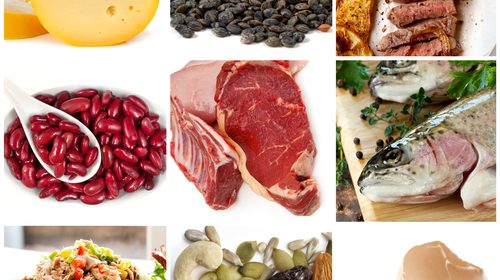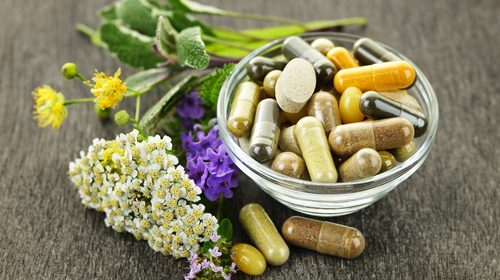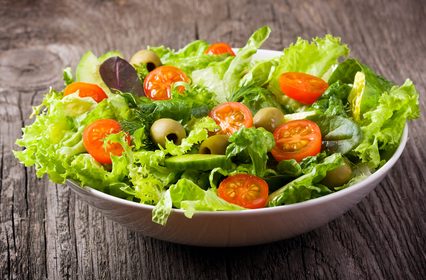Why Low-Fat Diets Will Hurt Your Running
This is part five of the Running Warrior Performance Nutrition Series
(parts of this were excerpts from ‘Fast Track’ by Suzy Favor-Hamilton and Jose Antonio, Ph.D.)
Low fat diets are sure-fire way to ruin your health, your looks, and your performance, period! Not eating fat, especially the healthy kinds called MUFAs and PUFAs, is a huge mistake. MUFAs and PUFAs are short for monounsaturated and polyunsaturated fats, respectively.
So what are these healthy fats that you need to eat? Nuts of all kinds (e.g., cashews, almonds, peanuts [though technically it’s a legume not a nut]), fish fat (e.g., eat fatty fish such as salmon), and olive oil (e.g., use olive oil-based dressing).
If you eat these 3 foods which have the right fats, you’ll be much healthier, and in the long-run (pun intended), you’ll be a better athlete.
Why should you eat healthy fats?
- The “healthy fats” aren’t stored as body fat as easily as the unhealthy fats such as the saturated variety.
- You can eat more fat, still have a six-pack, and have more energy.
- These fats are good for your heart!
- Fats are a good way to get needed calories when you’re training heavily.
- Besides protein, fats are needed by your body! If you don’t eat enough of the essential fats (linoleic and linolenic acid), you’ll feel lethargic and unhealthy.
So if you’re one of those who lives the “low-fat” lifestyle, STOP! Fat is not the enemy. Not enough fat will make your hair brittle, your skin dry, and your moods…well, moody! Fat is needed for energy, hormone production, cell membrane structure and function, and a host of other very valuable things. Let’s go over the different kinds of fats so that you can figure out which fats to limit and which fats to consume. By the end of this, you’ll be a fat expert!
Three Main Kinds of Fat
The 3 main types of fatty acids are saturated, monounsaturated (MUFAs), and polyunsaturated (PUFAs). A saturated fatty acid has the maximum possible number of hydrogen atoms bonded to every carbon atom. Hence, it is “saturated” or completely filled with hydrogen molecules. On the other hand, a fatty acid with one double bond is called “monounsaturated” because there are some “missing” hydrogens.. Fatty acids having more than one double bond between carbon molecules is polyunsaturated. (See Figure 1). All fat in foods have a combination of the three for the most part. What’s different is the percentage contribution from each.
Figure 1: Chemical Structure of Fatty Acids
| Saturated Fat (i.e., saturated fatty acid) |
Unsaturated Fat (i.e., unsaturated fatty acid) |
|||||||||||||||||||||||||
|
|
|||||||||||||||||||||||||
| Carbon-Carbon Single Bond |
Carbon-Carbon Double Bond |
|||||||||||||||||||||||||
Fat Facts – The Bad
Trans and Saturated Fats
These two fats are a deadly duo. If you enjoy living, I’d suggest you limit your consumption of these fats. An easy way to figure out if a fat is saturated is this. Saturated fats are solid at room temperature. So that delicious morsel of fat from that pork chop is probably high in saturated fat. Trans fat (also known as trans fatty acids) are made when food manufacturers turn liquid oils into solid fats. However, a small amount of trans fat occurs naturally in animal-based foods. Just like saturated fats, trans fats are not your best friend.(7) They can elevate the ‘bad’ cholesterol (LDL) and thus increase your risk of heart disease. Next time, read a food label. If it says “partially hydrogenated” or “hydrogenated” then there’s trans fats in it. You’ll find trans fats in foods such as margarines, cookies, snacks, fried foods and even peanut butter. (See Table below).
Foods that Contain Bad Fats
Butter
Margarine (especially the harder varieties)
Crackers
Cookies
Snack Foods
Baked Goods
Anything Made with “Partially Hydrogenated Vegetable Oil”
Certain Cuts of Beef (e.g. hamburgers)
Pork
Chicken Skin
Whole Milk
Whole Cheese
Does this mean that you should eliminate these foods completely from your diet? No. First of all, it’s just not practical. And secondly, certain foods such as dairy and meat contain naturally occurring trans fats. For instance, beef is a great source of zinc, iron, and protein. Thus, eliminating beef from your diet isn’t the best option; instead, consume beef once or twice a week (rather than every day). And then focus on the leaner protein sources (e.g., skinless chicken) or the healthy proteins with fat (e.g., salmon) most of the time.
Fat Facts – The Good
The MUFAs and PUFAs
Researchers have known for many years that high fat intake, at least in the form of olive oil, does not have any apparent negative health effects. Furthermore, we know that monounsaturated fats are less likely to be stored as fat. So keeping that svelte physique is not a problem if you eat the good fats. For instance, in an eight week study done on mice, scientists found that non-exercising mice fed the beef fat gained more fat than those fed a monounsaturated fat.(8) So what’s good for your pet mouse must be good for us, correct? Well in this case, yes.
MUFAs are healthy fats found in nuts, avocadoes, and oils. Olive and canola oil are greater sources of MUFAs. According to Chris Lydon, M.D., author of Look Hot, Live Long, she states that “unsaturated fats can help reduce circulating triglyercides and decrease your risk of cardiovascular disease, stroke, obesity, and diabetes!” For example, a 30-week study in which subjects consumed lots of peanuts, which is high in MUFAs, lowered serum or blood levels of fat (specifically triglycerides) and reduced cardiovascular disease risk.(9)
Table – A Brief List of Some Darn Good Fats!
| Food | % PUFA | % MUFA | % Saturated |
| Salmon | 45 | 38 | 17 |
| Herring | 27 | 47 | 26 |
| Walnuts | 56 | 28 | 16 |
| Cashews | 6 | 70 | 18 |
| Macadamia nuts | 10 | 71 | 12 |
| Almonds | 17 | 78 | 5 |
| Peanuts | 29 | 47 | 18 |
| Canola oil | 37 | 54 | 7 |
| Olive oil | 8 | 75 | 16 |
| Avocado | 10 | 70 | 20 |
PUFAs represent quite a varied number of fats. Most Americans get plenty of linoleic acid (an omega-6 PUFA) but usually not enough of linolenic acid (an omega-3 PUFA). Linoleic acid is found in corn, cottonseed, and soybean oils whereas linolenic acid is found in high concentrations in walnuts and flax, along with some in soybean oil. Thus, some PUFAs are more beneficial than others. And then there are the omega-3 fats found in fish oil or fat (e.g., eicosapentanoic acid or EPA, docosahexanoic acid or DHA). These fats are great for you; yet, most of you would rather stick a nail in your thumb then eat fish. Most of us tend to eat too much of the omega 6 fats found in vegetable oils at the expense of not enough omega 3s. You should eat a 1:4 ratio of omega 3s to 6s. Yet most of you probably eat closer to a 1:20 ratio; meaning you consume 20 times more omega 6s than 3s. So if in doubt about the kinds of fat to eat of the PUFA variety, do the following: eat fish. And if you don’t like fish, add some flax oil to your protein powder and get your good fats that way. Fish is such a great source of fat (and protein) that it deserves special mention.
Somethin’ Fishy Here…
Fish is one of the best foods you can eat, period! The protein is great and the fat has tremendous health benefits. The omega 3 fats found in certain fish (for example salmon) are something that no athlete should be without. Why are these so important? It’s these tongue-twisters: eicosapentaenoic acid (EPA) and docosahexaenoic acid (DHA). Greenland Eskimos who eat lots of fish, more fish than a starving shark, have a lower incidence of heart disease, arthritis, and psoriasis. Many have attributed this to the large quantities of fish fat they consume. The beneficial effects of fish fat are numerous; however, with regards to muscle, fish fat’s anti-inflammatory role may be of benefit to injured muscle. Why is this good? Inflammation is a normal and necessary component of skeletal muscle adaptation to intense exercise. Take some fish fat, or better yet, eat lots of fish, and perhaps you’ll speed up your post-exercise recovery process. The best sources of EPA and DHA are the cold-water fish such as salmon, sardines, mackerel, herring, trout and pilchards. EPA and DHA fatty acids make up 15-30 per cent of the oil content of these fish. And unlike chicken, you want to eat the skins of these fish.
Another cool thing with EPA is that it helps prevent muscle wasting with certain diseases. This doesn’t mean you should wait until you’re wasting away before you visit the local fish market. On the contrary, what it does indicate is that fish is a potent health food. According to sports nutritionist, Douglas Kalman, M.S., R.D. of the Miami Research Associates, “Fish is the best source of the omega 3 fats, DHA and EPA; and it would behoove all runners to consume fish regularly.” In summary, fish fats can do some amazing things (see Table below).
Table – Health Benefits of Fish Fat
- Treatment with EPA improved blood vessel function in individuals with heart disease. (10)
- EPA and DHA can reduce risk of death from heart disease.(11)
- EPA can reduce injury to the heart.(12)
- EPA and DHA can lower blood fat (triglyercides).(13) (14)
- Besides the wondrous benefits of fish fat, the protein in fish is excellent was well. There’s no single food that provides health and fitness related benefits as well as fish.
Just the Fat Facts
Here’s an easy to follow summary on fat.
- Eat fish fat once a week; they lots of the healthy PUFAs (omega 3s).
- Use olive oil based salad dressing; the MUFAs are great for you.
- Eat nuts; they have lots of the healthy MUFAs.
- Fat should make up roughly 30% of your calories. Don’t follow a low-fat diet!
- Limit intake of saturated and trans fats (basically avoid processed foods). Perhaps eat red meat a twice per week; Eat whole eggs every other day.
If you are thinking of trying CLA, MCTs, or diacylglycerol to see if it helps you, talk to a sports nutritionist first.







